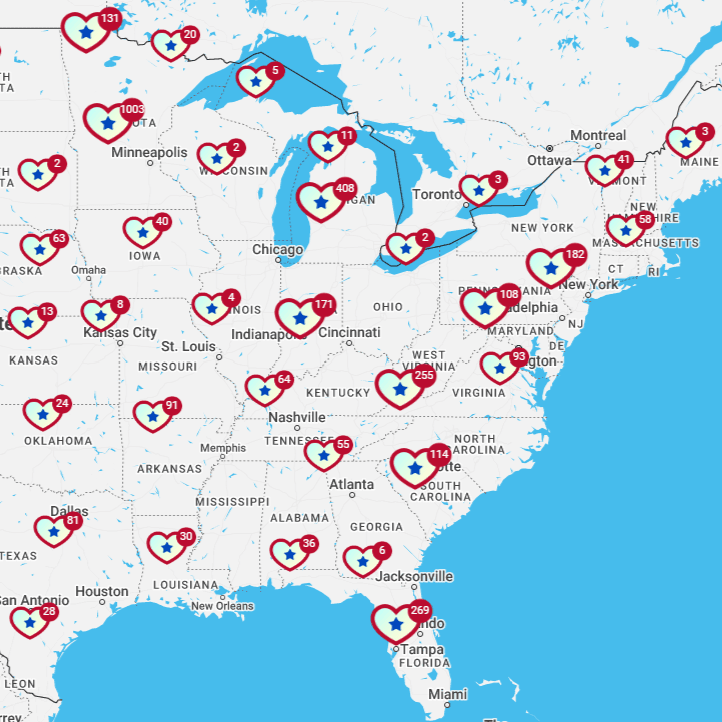
What It Means to Be a No Party Preference Voter
Party affiliation is one of the most essential factors that shapes voters’ perceptions and preferences. There are a variety of terms for voters who do not align with either of the United States’ two major parties, the Republican and Democratic parties. These voters are sometimes called independents, unaffiliated voters, No Party Affiliation (NPA) voters, or No Party Preference (NPP) voters, among other terms.
In this guide, we’ll explore what it means to be a No Party Preference voter, which states most commonly use this term, and how many NPP voters there are.
Who Is a No Party Preference Voter?
The label “No Party Preference” describes voters who opt not to belong to any political party. The reasons why someone might decline to affiliate with a political party can vary from person to person. Some people may feel that no political party adequately represents their interests. Others may opt to retain their political neutrality. Still others may choose to register as NPP voters as a way of protesting the dysfunction of the two-party system.
In general, the reasons why someone might want to be labeled as an NPP voter are similar to the reasons why someone might want to be labeled as an independent voter.
Which States Use the Term No Party Preference?
Not all states use the label of “No Party Preference.” In fact, most states use other terms to describe voters who are not registered with any political party.
These other terms include:
Independent voters
Unaffiliated voters
Nonaffiliated voters
Nonpartisan voters
Undeclared voters
No Party Affiliation (NPA) voters
NPP Voters in California
California is the main state that uses the designation of “No Party Preference.” Formerly, NPP voters in California were known as “decline-to-state” or “DTS” voters.
As outlined by the California Secretary of State, NPP voters in California may participate in presidential primary elections via a non-partisan ballot. Their ability to participate in political parties’ partisan elections depends on the rules of each political party.
To learn more about how to participate in California’s elections, check out this voter guide. You can also learn more about how elections function in California by exploring this guide to top-two primary elections.
NPP Voters Outside of California
Outside of California, the state of Washington also uses the term “no party preference” to some extent. In Washington, this label is mainly used to describe political candidates.
For example, multiple “no party preference” candidates are currently on the ballot for governor of Washington. There are also multiple “independent” candidates on the ballot, as well as members of third parties such as the Libertarian Party and Green Party.
Other states have similar, though slightly different, designations for voters who do not align with any political party. Here are a few examples:
Oregon calls these voters “nonaffiliated voters.”
Nebraska calls these voters “nonpartisan voters.”
In South Dakota, voters can register as either “No Party Affiliation” or “Independent” voters.
Understanding the terminology used in your state can help you prepare to engage effectively in local, state, and federal elections. In some states, the party you choose to register with can also influence which elections you are eligible to participate in.
How Many No Party Preference Voters Are There?
The number of people who don’t choose to identify with a particular political party is rising. Across the nation, 42% of Americans consider themselves to be political independents, according to the latest Gallup poll. But how many voters specifically use the label of “No Party Preference”?
As of October 3, 2023, 22.23% of California voters were registered as NPP voters. That amounts to a total of 4,914,982 NPP voters in California. In addition, 7.05% of registered California voters, or 1,559,773 voters in total, are registered with a minor party.
Pre-registered voters —- meaning teenagers who pre-register to become automatically registered to vote on their 18th birthdays — showed a higher right of identifying as NPP voters. 36.38% of pre-registered voters in California marked themselves as No Party Preference voters. This trend signals rising interest in independent politics among California’s younger generations.
Different counties in California also have different percentages of NPP voters. The following counties ranked the highest for their percentages of NPP voters in 2023:
Santa Clara County
Alpine County
Imperial County
San Francisco County
San Mateo County
San Diego County
Alameda County
Orange County
Yolo County
Los Angeles County
Future statistics will show how the number of No Party Preference voters in California continues to increase or decrease, as well as which parts of the state continue to have the strongest independent lean.
Take Action as an NPP Voter
Being a No Party Preference voter means that you don’t affiliate with any political party, so you are free to make your own decisions and consider each candidate based on their unique qualifications and policy platforms.
Are you an NPP voter? Join the nationwide movement for non-partisan and independent politics by becoming part of GoodParty.org’s online community. Here are a few powerful ways to get involved:
Sign up for updates. Want to learn more about the independent movement? Sign up for our email newsletter to stay up-to-date with the latest news and events.
Join the community. Join the GoodParty.org Community to connect with other NPP and independent voters across the country. You’ll also get access to the latest updates about volunteer opportunities.
Want to go even further? Book a free consultation to learn how you can run for office as an independent or non-partisan candidate in your community. Whether you’re running for a local office like school board or city council, or a state-level office like state legislature, GoodParty.org is here to support you with free campaign tools, expert support, and access to a nationwide community of independent political candidates and volunteers.
Photo by Pedro Marroquin on Unsplash
